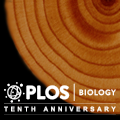The Birth of the Ecosystem within Us
When Chana Palmer started collecting baby poop from new mothers in 2006, few outside the halls of academia had heard anything about “microbiomes” in the environment let alone the thriving microbial communities that inhabit our bodies. Even inside those halls, scientists exploring the diversity and function of microbes wherever they lived were still debating the proper terms to distinguish the organisms –- microbiota -– from the collective genomes of those organisms — microbiome. Even so, scientists have known for more than a century that the human body offers shelter and nourishment to a diverse and abundant society of microbes. But until the past decade or so, they lacked the tools to seriously investigate the identities and functions of our microbial cohorts. Now, media outlets routinely report on studies that limn yet another way the intimate attentions of trillions and trillions of microbes shape our health.
Though microbes inhabit nearly every millimeter of the human body, the vast majority live in our gastrointestinal tract. Under the best circumstances, our gut microbiota provide us with diverse essential services, including nutrient processing, pathogen protection, and regulation of fat supplies. But gut microbes can also play a role in several diseases, including stomach cancer, irritable bowel syndrome, and necrotizing enterocolitis, a scary condition marked by dying gastrointestinal tissue seen mostly in premature or sick babies. To help understand how gut microflora might influence disease, Palmer, a geneticist in Pat Brown’s lab, wanted to figure out what the gut microbiota looks like in healthy babies. She published the results of her investigation in a 2007 PLOS Biology paper, highlighted here as part of the journal’s 10th anniversary.

As adults, our gut contains a thriving microbe metropolis, its diverse constituents each doing their part to repay our hospitality. As newborns, our gastrointestinal tract is sterile (or nearly so). To help establish a baseline of healthy gut microflora profiles, Palmer needed to determine where all these microbes come from and how they assemble over the first year of life into the communities that keep us healthy. She did that with the help of 13 volunteer mothers who dutifully collected their babies’ stool samples over the first year and stored them in the freezer until Palmer stopped by to pick them up. One woman confessed to hiding the poop from her mother-in-law, who she feared would not be amused to frozen baby poop nestled next to the ice cream.
To determine the origins of the microbes, Palmer also collected stool samples from parents and siblings, as well as milk and vaginal samples from the mothers. Although Palmer admits she felt awkward lurking outside the hospital’s ob-gyn area to secure vaginal samples from expectant moms, she felt honored to be among their first visitors in the hospital after the baby was born “to pick up the first poo.”
With an average of 26 poop samples from 14 babies in hand (one woman had twins), Palmer set to work charting the nature and abundance of microbes found in the gastrointestinal tract of these healthy, full-term babies. Working with Brown (the man who developed the first DNA microarrays), Palmer probed the samples with a custom microarray based on a gene sequence long used to identify different microbial species (called SSU rDNA, for small subunit ribosomal DNA).
Interestingly, the babies had strikingly different microbial profiles during their first months. Based on estimates of bacterial density, Palmer saw no link between mode of delivery and when microbes started colonizing the babies’ guts, though at first two babies delivered by a planned C-section (and thus were not exposed to microbes present in mom’s birth canal) had much smaller populations of bacteria than the other babies. And it was only the twins who showed a very similar pattern of microbial colonization. For the rest of the babies, the microbial profiles—which species appeared, when they showed up, and how long they stayed—varied considerably, revealing a far broader definition of “normal” than previously recognized.
With just 14 babies, Palmer couldn’t say for sure where the bacterial pioneers came from. Nascent colonies in some babies resembled their mom’s vaginal samples while another baby’s colony looked more like mom’s milk, and still another closer to mom’s stool.
Wherever the seeds of colonization come from, it takes just a year for the microbes within us to build the complex ecosystems we need to thrive. By the time the babies had reached a year old, their microflora had settled into the communities commonly found in most adults.
Like most everything in biology, a combination of genes and environment appears to govern the process microbes follow to colonize our guts. With this baseline for what healthy gut microbiota should look like, researchers can compare them to different disease states to help them identify whether and how bacterial communities might be contributing. Palmer told me she had hoped this baseline would help guide other researchers’ efforts to understand the complex relationship between our microflora and health. Judging by the studies that cite her paper, it appears many have done just that.
*****
Read the synopsis that accompanied the paper, and a recent essay on maternal transmission of microbiota.
Hear Chana Palmer discuss her study on NPR.
 See the Tenth Anniversary PLOS Biology Collection or read the Biologue blog posts highlighting the rest of our selected articles.
See the Tenth Anniversary PLOS Biology Collection or read the Biologue blog posts highlighting the rest of our selected articles.

Palmer C, Bik EM, DiGiulio DB, Relman DA, Brown PO (2007). Development of the Human Infant Intestinal Microbiota. PLoS Biology, 5 (7) DOI: 10.1371/journal.pbio.0050177

